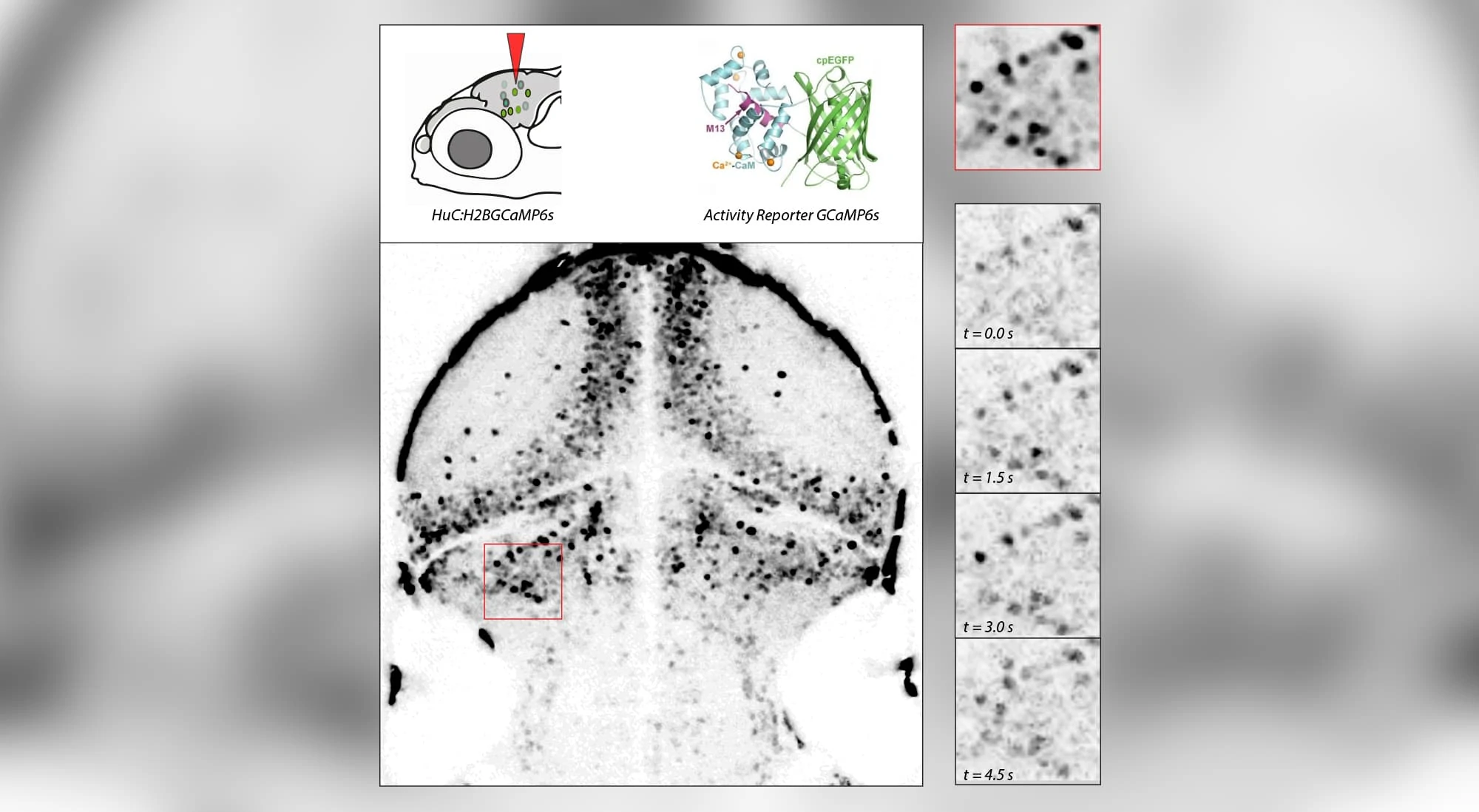MPIN and Menlo Systems team up for shedding new light on the brain mechanisms.
March 2018

© MenloSystems GmbH
Recordings of temporal evolution of neuronal activity in the brain of zebrafish larvae using a fluorescent reporter GCaMP6s and YLMO-930

Dr. Michael Mei
CEO, MenloSystems GmbH
© MenloSystems GmbH

Prof. Dr. Herwig Baier
MPI for Neurobiology
© Max-Planck-Institut für Neurobiologie
Recording neuronal activity deep in the brain is an important method in life science. Currently, neurons are labelled with fluorescence-based activity reporters and excited with light pulses to reconstruct changes in activity based on the change in the fluorescence signal. Recently, researchers at the department Genes-Circuits-Behavior of the Max Planck Institute for Neurobiology and Menlo Systems teamed up for applying the latest achievements in fiber-based laser technology to the exploration of neuronal circuits. This collaboration took off with the first field test of YLMO-930, the revolutionary Menlo Systems’ fiber laser emitting femtosecond pulses at 930nm, to record neuronal activity in vivo using GCaMP6s, an activity reporter based on the Green Fluorescent Protein, EGFP. In the future, this partnership aims to further bridge developments in laser technology and basic life science research to extend the available investigation methods.
- Am Klopferspitz 19a
- 82152 Planegg/Martinsried
- Phone: +49 (0)89/18 91 66 0
- moc.smetsysolnem@retsambew
- www.menlosystems.com



